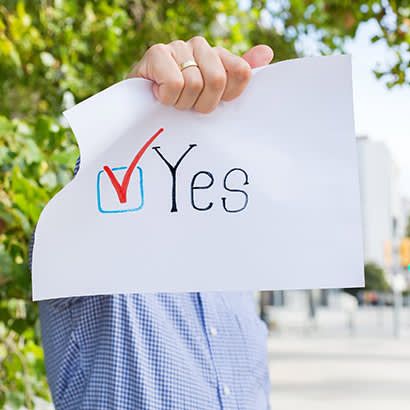
For an enhanced digital experience, read this story in the ezine.
The national general election of November 2020 was a historic one, with nearly 70 percent of the eligible U.S. voting population casting their votes. This figure represents the highest voter turnout rate in 120 years. The main draw for the 2020 election was for the U.S. presidency. However, other significant factors actually motivated voters to get out and vote in record numbers — including control of the U.S. Senate, election of state governors, state constitutional amendments and local ballot initiatives for dedicated park funding measures.
Voters in 48 jurisdictions throughout the country had the opportunity to determine the future and purpose of their local outdoor spaces. Collectively, voters across the country approved approximately $3.7 billion in new public funding measures for projects that encompassed land conservation, outdoor recreation expansion, wildlife habitat protection, improvement of water-quality initiatives, climate-resiliency measures and park enhancements designed to expand local access. What’s really captivating about these funding measures is that they increased taxes. While most mechanisms for these tax increases were forward-looking, the results all reverberated with the same message: People are willing to pay more taxes to deliberately improve the value of local outdoor spaces that enhance their quality of life. NRPA research supports this sentiment, finding that more than 4 in 5 people agree that parks and recreation is an essential local government service.
The COVID-19 Factor
The coronavirus (COVID-19) pandemic brought the realization that parks and outdoor recreation facilities are an indispensable aspect of people’s lives. Moreover, COVID-19 exacerbated an already alarming chronic disease — substance use and the mental health crisis — while plunging many communities and individuals further into poverty, social isolation, food insecurity and general uncertainty. Parks and recreation facilities have offered a solution to many of those societal challenges. As a result, local parks and trails have experienced a noticeable increase in use, about 35 percent, during the pandemic. Moreover, 3 in 5 people — or more than 190 million people — visited a local park, trail, public open space or recreation facility during the first three months of the pandemic (mid-March through mid-June 2020).
This revitalized public appreciation for increased outdoor recreational access likely contributes to the success rates for these dedicated park funding voter initiatives. The continued success in these dedicated public funding instruments is occurring at a critical time for park and recreation agencies. The economic aftershocks of COVID-19 resulted in substantially decreased funding for local park and recreation agencies. According to NRPA research, 48 percent of park and recreation agencies are facing budget cuts of about 20 percent in the upcoming year, with 33 percent of agencies making typical reductions to their capital budgets of about 37 percent. Despite this decrease in economic resources, park and recreational facilities have been called upon to expand their services. Adopting more of these dedicated funding mechanisms is an important tool that can help to alleviate the pressure for both park and recreation agencies, as well as for municipal governments, and provide the much-needed additional resources.
The Voters Have Spoken
As the economic reverberations of COVID-19 develop, it will be imperative for local government and elected officials to strategically invest in parks and recreation facilities as vital and necessary community services. After all, 72 percent of U.S. adults are more likely to vote for a local political leader who makes park and recreation funding a priority. The continued success of dedicated public funding initiatives, even in a difficult economic climate, is yet another sign that voters continue to embrace these innovative public finance tools as worthwhile alternatives for the upkeep and expansion of public recreational spaces. Parks and recreation continues to experience strong bipartisan support and is one of the rare electoral issues that unites voters and brings communities together.
Elvis Cordova is NRPA’s Vice President of Public Policy and Advocacy.

